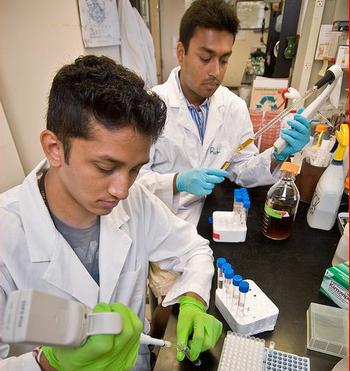
WASHINGTON, DC, August 1, 2012 (ENS) – Federal food and water safety regulators have issued the nation’s first Guideline for conducting meaningful assessments of the risks to Americans posed by pathogens in food and water.
The new Microbial Risk Assessment Guideline was published Tuesday by the U.S. Environmental Protection Agency and the Food Safety and Inspection Service, FSIS, of the Department of Agriculture.
It deals with assessing the effects of microorganisms such as viruses, bacteria and parasites that can cause disease in humans, animals and plants.

People who ingest harmful microbes in food and water can suffer acute gastrointestinal-related illnesses. While many of these illnesses are uncomfortable but short-term, ingestion of some pathogens can result in premature death or long-term permanent health effects such as reactive arthritis, cancer, and juvenile-onset diabetes.
Illnesses caused by pathogens in food arise frequently across the United States. For instance, over a five-month period this year two strains of salmonella infected 425 people from 28 states and the District of Columbia who ate raw yellowfin tuna; 55 were hospitalized.
In July, a Pennsylvania company was forced to recall 29,000 pounds of fresh ground beef potentially contaminated with salmonella after 33 people from seven states were infected with salmonella traced to the company’s product.
Food recalls recently ordered by the FSIS include onions, canteloupes and sausages contaminated with listeria and smoked duck products contaminated with salmonella.
Written for risk assessors from participating federal agencies, the new MRA Guideline is intended to improve the quality of the data collected by public health scientists charged with protecting Americans from such pathogen-related risks in food and water.
“This guidance contributes significantly to improving the quality and consistency of microbial risk assessments, and provides greater transparency to stakeholders and other interested parties in how federal agencies approach and conduct their microbial risk assessments,” said EPA Science Advisor Dr. Glenn Paulson.
Formal risk assessments for food, water, and environmentally-relevant chemicals have been undertaken for decades. But an overarching microbial risk assessment guideline has not been available until now.
The guideline meets this need by providing comprehensive, yet specific and descriptive information for developing assessments of microbial risks in food and water.
“The microbial risk assessment guideline developed by FSIS, the EPA and our other public health partners will help protect consumers by allowing us to uniformly assess and reduce health risks from pathogens,” said USDA Under Secretary for Food Safety Dr. Elisabeth Hagen.
The Guideline addresses the entire risk assessment process from an introduction to terminology and roles of the participants to planning the risk assessment.
It covers identifying and characterizing the hazard, assessing how the size of an outbreak may be affected by the dose or how the severity of the disease may be affected by the pathogen and its response within the human host.
The document describes the importance of addressing the routes of exposure, transport media, uncertainties, and assumptions for exposure and the other components of the risk assessment paradigm when characterizing risk. It also provides information about microbial risk management and risk communication.
“We’re proud to have worked with our partners on this guideline that will provide our risk assessors with a transparent and scientifically rigorous document to use in protecting public health,” said Dr. Hagen.
“Based on the success of this project, we are seeking further opportunities to combine our technical expertise in our continuing efforts to protect the Americans’ health,” said Dr. Paulson.
Copyright Environment News Service (ENS) 2012. All rights reserved.
© 2012, Environment News Service. All rights reserved. Content may be quoted only with proper attribution and a direct link to the original article. Full reproduction is prohibited.
